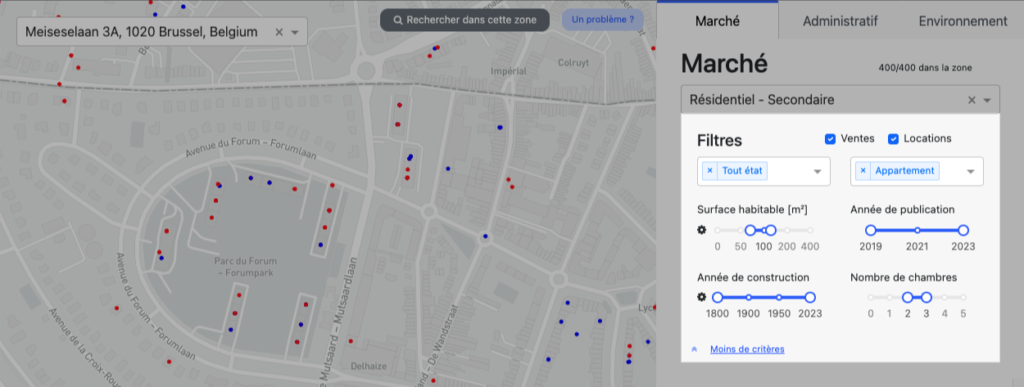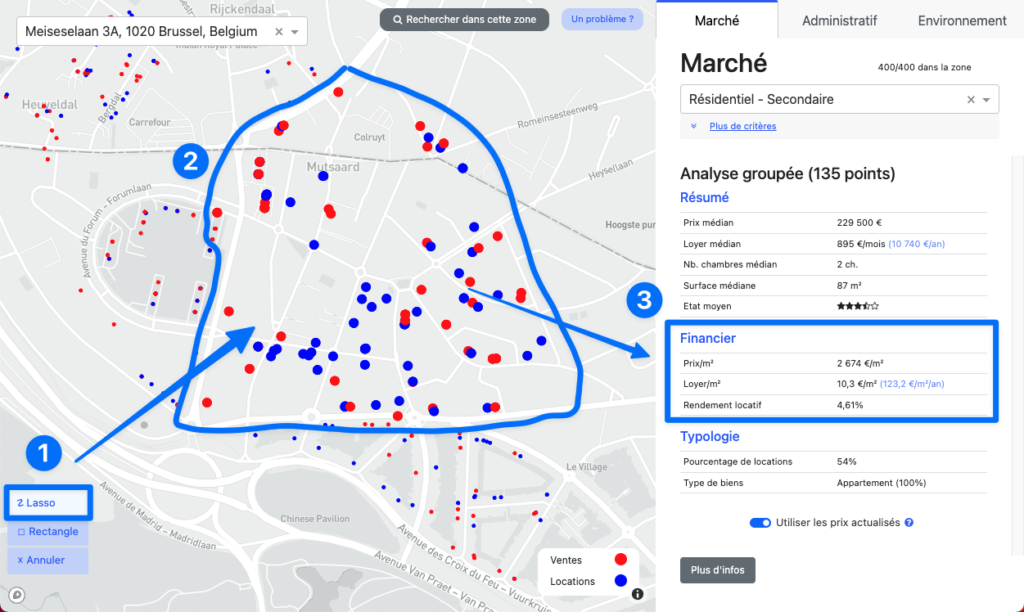Capitalization valuation is generally used in rental investments. In other words, the investor is not buying a property, but rather a yield: "Given this rent, and I want a 6% yield, what is the maximum price I want to buy at?"
Capitalization rate = rental yield?
No. If the two are similar, the rental yield includes the duty fee (registration fee). The method is called "yield valuation" when the rate of return is used.
This article explains how to calculate the value of the property using this methodology.
Theoretical approach
In the capitalization approach, the value is linked to the rental income of the property :
Present Value = Net Operating Income / Capitalization Rate
Net operating income is the sum of rents received, less expenses (taxes, withholding tax, etc.). The capitalization rate is determined based on observation of the local market and the segment in question. Indeed, the capitalization rate depends on:
- Location: The capitalization rate is lower in good locations. The underlying logic is that an investor will accept a slightly lower return if the location is very good. Conversely, to attract an investor in a smaller city, the capitalization rate will have to be high (proportional to the return).
- The segment: the capitalization rate in commercial and retail real estate is higher than in residential, particularly to cover the risk of rental unemployment (e.g. an unrented office).
To take an example, a rental property with an annual net operating income of 700,000 euros with a capitalization rate of 6% would be worth 11.7 million euros.
The advantage of this method is that it takes into account the real yield of the property. On the other hand, it tends to overestimate properties with a good yield (e.g., student housing buildings) and underestimate properties with a poor yield (e.g., single-family homes).
In practice, to calculate the value of an asset by capitalization, we need two elements:
- The rental income of the property
- The capitalization rate
Determine a rent and capitalization rate
Using the information available
To determine the rental income of a property, there are three scenarios:
- Either the building is 100% rented
- Either the building is partially rented (80% rented: 5 apartments of which 1 is currently empty)
- Either the building is not rented: this is the case if the lease has just ended or if the owner occupied the property
If you have rental leases, the rental value indicated on them can be used as a basis to justify the real rental income of the property. If the property is not rented or is partially rented, an estimated rental value will need to be determined.
For the capitalization rate, one can base it on knowledge of the market and an investor's expectations (minimum return). But it is always interesting to know the return observed in a specific geographic area and on a particular segment.
Using a market analysis tool
Without market knowledge or a current lease, it is more difficult to establish a benchmark rent for the expected investment. You can use the Market Explorer benchmark tool, which will extract the following financial information:
- the price per square meter;
- rent per square meter;
- the gross rental yield (calculated on the basis of the two previous values).
Let's take an example with an apartment of ±90m2 in Brussels, Mutsaard district. Let's start by entering an address and selecting a market (Secondary Residential Market for example):

Once the drop-down menu is collapsed, we click on "More criteria" to display the filter panel. This will allow us to refine the search to our segment (2-3 bedroom apartment) and to have only comparables that are fairly similar in terms of condition and surface area. Be careful, the more you filter, the fewer points there will be on the map!

When the filters are applied, we can freely select a group of points with the Lasso tool (here the Mutsaard district in Brussels) corresponding precisely to your area of interest.

We note that for an apartment of approximately 90 m² in the district, the rent will be €927/month (€10.3/m2 x 90m2) . The capitalization rate on this segment and in this district is 4.61% . We can therefore estimate the value of this property at €241,000.
Why does the app display “rental yield” instead of capitalization rate?
For the sake of simplification, this terminology has been used to be understandable by as many people as possible. The value displayed does not take into account registration fees and is therefore similar to the capitalization rate.
These data constitute an excellent basis for the calculation since they take into account the precise location (thanks to the lasso) as well as the exact typology studied (thanks to the filters).
Conclusion
We have seen what the capitalization valuation method is, and how to determine a market rent and reference capitalization rate for a given segment.
Of course, this article is only intended to illustrate the calculation by capitalization and does not replace a visit, the intervention of an expert or an agent who will be able to evaluate specific elements which will increase or decrease the value of a property.
